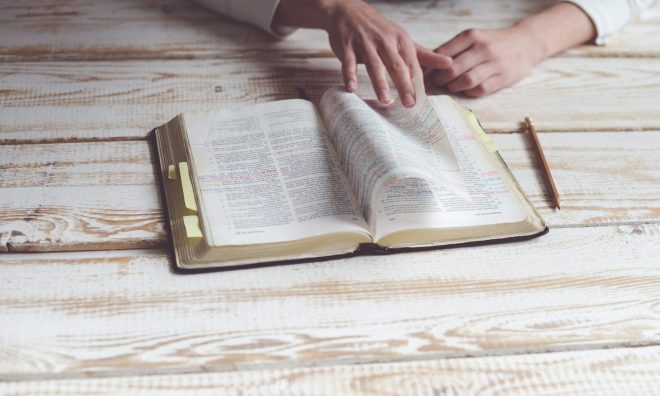
Encore Post: [Seventh Post in a series on the divine service] After the Collect of the Day has been said, the pastor typically takes up residence at the lectern to read the set lectionary readings for the day. So what are these readings? And how do they work together?
Most Sundays at my congregation, you will hear an Old Testament lesson followed by a psalm. After the Psalm, then comes the Epistle lesson. Then, after the Epistle lesson, the congregation rises to sing the Alleluia before hearing the Holy Gospel for the day.
We finally get the “meat and potatoes” of what we call the “Service of the Word”. As Dr. Arthur Just says in his magnificent book Heaven on Earth: The Gifts of Christ in the Divine Service, “Christ comes to us from the voice of the pastor to our ears” (Still for sale from CPH) Jesus is really the one speaking when we hear the Word of God proclaimed from the lectern. Jesus is the Word of God now enfleshed, present among us for our salvation.
We begin with the Old Testament and move through the Psalm, which makes us consider the surrounding lessons, to the Epistles and finally to the climax of the Gospel. We note this climax by rising from our pews to stand out in reverence for the very real and recorded words of Jesus being spoken to us.
I often ask my confirmation students to find connections between the readings. The easiest connections to find at least in the three-year lectionary are those connections between the Old Testament lesson and the Gospel. Those who constructed the new lectionary wanted to follow what Dr. Just calls a “promise and fulfillment hermeneutic”. That is a fancy way to say that what is spoken about in the Old Testament lesson is dealt with in the Gospel. For instance, look at the first Sunday in Lent. The Old Testament lesson is Genesis 3:1-21, the fall of Adam. The Gospel is Matthew 4:1-11, Jesus overcoming the temptations of Satan. What Adam could not do, the new Adam, Jesus, did, and ultimately, the battle was fully won at the cross.
Depending on the season, the Epistle lesson might be part of a continuous reading from one book. But in other seasons, it jumps around a decent degree. However, what should be noted is how all the readings point us to the Gospel, the very living words of Christ Jesus our Savior, who is present for us in his flesh and blood even in His Word to work in us our salvation. Having heard the Words of Christ in the readings, we are prepared now for the Creed and the Sermon to follow.
Originally posted at What does this Mean? Blog: https://whatdoesthismean.blog
The posts in the blog What does this Mean? are now available at What does this Mean? | Rev. Robert E. Smith | Substack
Rev. Jacob Hercamp
Christ Lutheran Church
Noblesville, Indiana
©2020 Jacob Hercamp. All rights reserved. Permission granted to copy, share and display freely for non-commercial purposes. Direct all other rights and permissions inquiries to cosmithb@gmail.com



